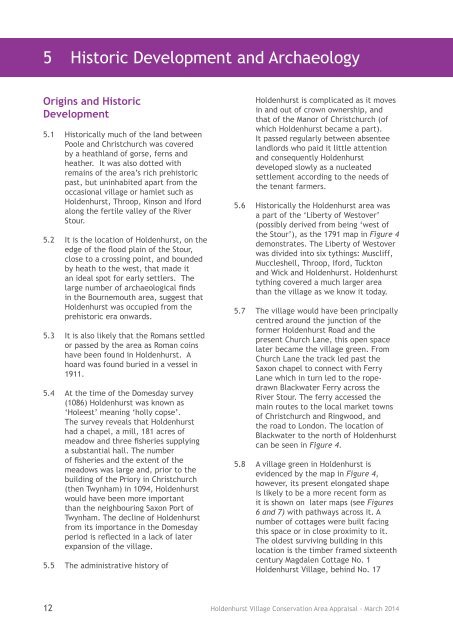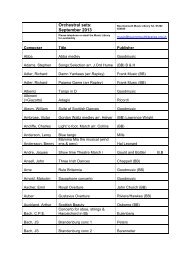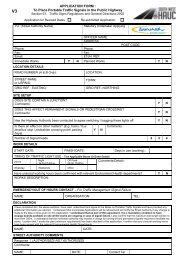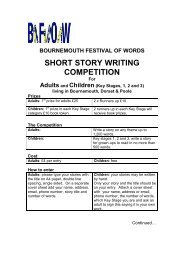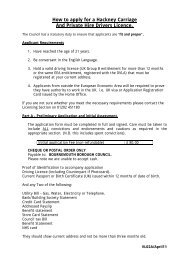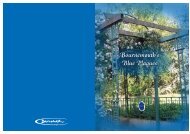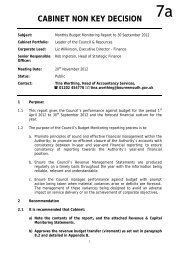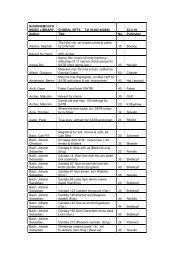Holdenhurst Village Conservation Area Appraisal - Bournemouth ...
Holdenhurst Village Conservation Area Appraisal - Bournemouth ...
Holdenhurst Village Conservation Area Appraisal - Bournemouth ...
You also want an ePaper? Increase the reach of your titles
YUMPU automatically turns print PDFs into web optimized ePapers that Google loves.
5 Historic Development and Archaeology<br />
Origins and Historic<br />
Development<br />
5.1 Historically much of the land between<br />
Poole and Christchurch was covered<br />
by a heathland of gorse, ferns and<br />
heather. It was also dotted with<br />
remains of the area’s rich prehistoric<br />
past, but uninhabited apart from the<br />
occasional village or hamlet such as<br />
<strong>Holdenhurst</strong>, Throop, Kinson and Iford<br />
along the fertile valley of the River<br />
Stour.<br />
5.2 It is the location of <strong>Holdenhurst</strong>, on the<br />
edge of the flood plain of the Stour,<br />
close to a crossing point, and bounded<br />
by heath to the west, that made it<br />
an ideal spot for early settlers. The<br />
large number of archaeological finds<br />
in the <strong>Bournemouth</strong> area, suggest that<br />
<strong>Holdenhurst</strong> was occupied from the<br />
prehistoric era onwards.<br />
5.3 It is also likely that the Romans settled<br />
or passed by the area as Roman coins<br />
have been found in <strong>Holdenhurst</strong>. A<br />
hoard was found buried in a vessel in<br />
1911.<br />
5.4 At the time of the Domesday survey<br />
(1086) <strong>Holdenhurst</strong> was known as<br />
‘Holeest’ meaning ‘holly copse’.<br />
The survey reveals that <strong>Holdenhurst</strong><br />
had a chapel, a mill, 181 acres of<br />
meadow and three fisheries supplying<br />
a substantial hall. The number<br />
of fisheries and the extent of the<br />
meadows was large and, prior to the<br />
building of the Priory in Christchurch<br />
(then Twynham) in 1094, <strong>Holdenhurst</strong><br />
would have been more important<br />
than the neighbouring Saxon Port of<br />
Twynham. The decline of <strong>Holdenhurst</strong><br />
from its importance in the Domesday<br />
period is reflected in a lack of later<br />
expansion of the village.<br />
5.5 The administrative history of<br />
<strong>Holdenhurst</strong> is complicated as it moves<br />
in and out of crown ownership, and<br />
that of the Manor of Christchurch (of<br />
which <strong>Holdenhurst</strong> became a part).<br />
It passed regularly between absentee<br />
landlords who paid it little attention<br />
and consequently <strong>Holdenhurst</strong><br />
developed slowly as a nucleated<br />
settlement according to the needs of<br />
the tenant farmers.<br />
5.6 Historically the <strong>Holdenhurst</strong> area was<br />
a part of the ‘Liberty of Westover’<br />
(possibly derived from being ‘west of<br />
the Stour’), as the 1791 map in Figure 4<br />
demonstrates. The Liberty of Westover<br />
was divided into six tythings: Muscliff,<br />
Muccleshell, Throop, Iford, Tuckton<br />
and Wick and <strong>Holdenhurst</strong>. <strong>Holdenhurst</strong><br />
tything covered a much larger area<br />
than the village as we know it today.<br />
5.7 The village would have been principally<br />
centred around the junction of the<br />
former <strong>Holdenhurst</strong> Road and the<br />
present Church Lane, this open space<br />
later became the village green. From<br />
Church Lane the track led past the<br />
Saxon chapel to connect with Ferry<br />
Lane which in turn led to the ropedrawn<br />
Blackwater Ferry across the<br />
River Stour. The ferry accessed the<br />
main routes to the local market towns<br />
of Christchurch and Ringwood, and<br />
the road to London. The location of<br />
Blackwater to the north of <strong>Holdenhurst</strong><br />
can be seen in Figure 4.<br />
5.8 A village green in <strong>Holdenhurst</strong> is<br />
evidenced by the map in Figure 4,<br />
however, its present elongated shape<br />
is likely to be a more recent form as<br />
it is shown on later maps (see Figures<br />
6 and 7) with pathways across it. A<br />
number of cottages were built facing<br />
this space or in close proximity to it.<br />
The oldest surviving building in this<br />
location is the timber framed sixteenth<br />
century Magdalen Cottage No. 1<br />
<strong>Holdenhurst</strong> <strong>Village</strong>, behind No. 17<br />
12<br />
<strong>Holdenhurst</strong> <strong>Village</strong> <strong>Conservation</strong> <strong>Area</strong> <strong>Appraisal</strong> - March 2014


